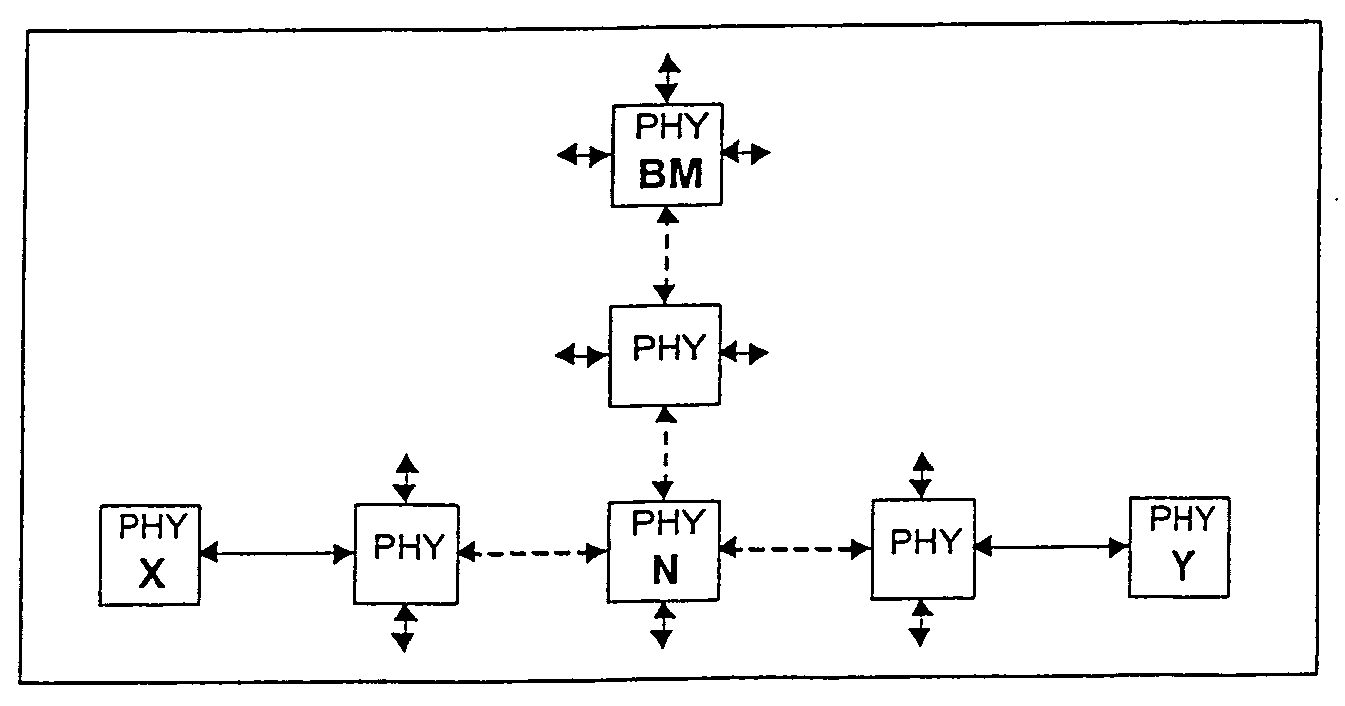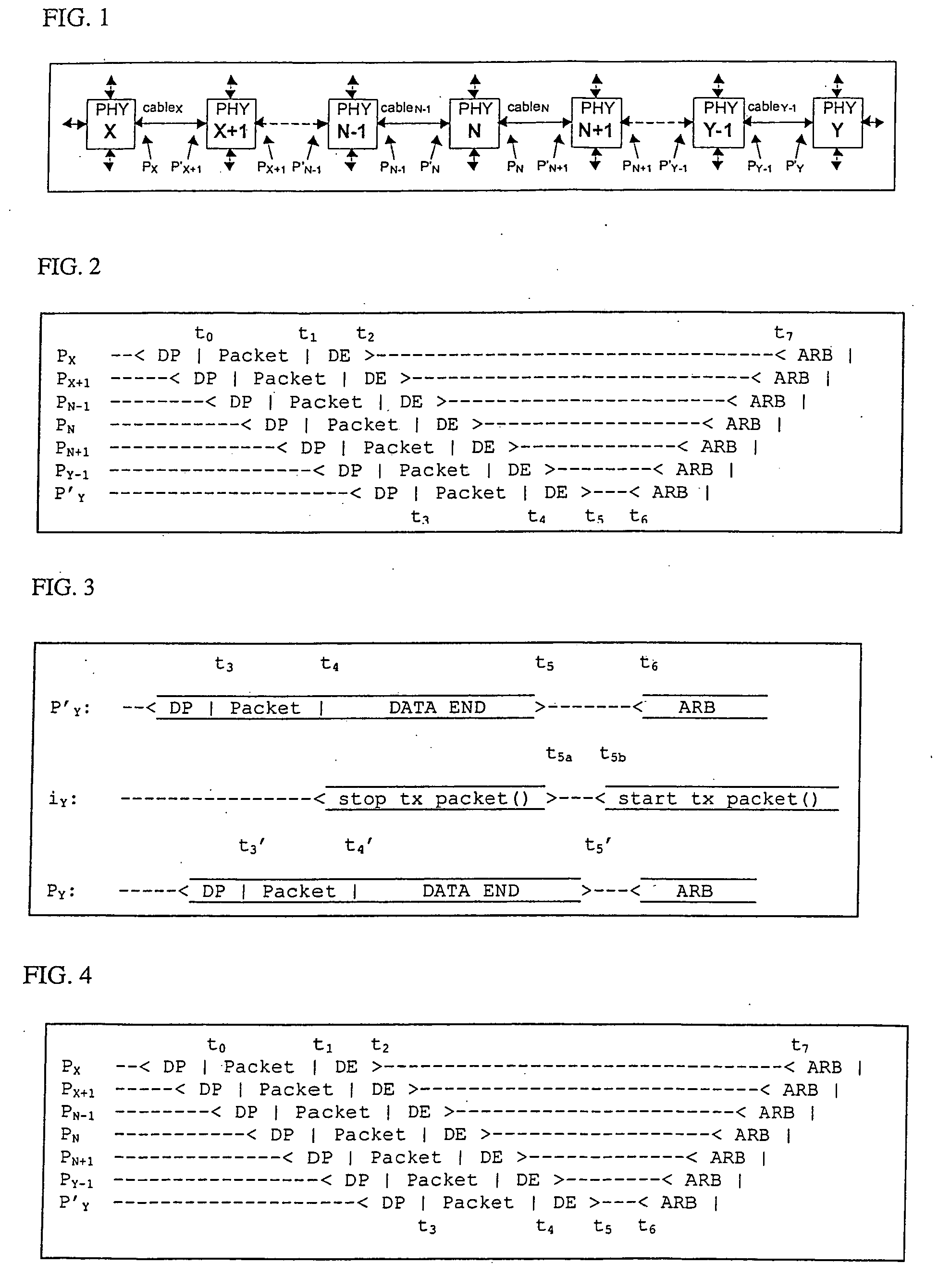Gap count analysis for the P1394a BUS
a gap count and bus technology, applied in the field of serial bus performance, can solve problems such as unoptimized gap count, and achieve the effect of optimal gap count and superior performan
- Summary
- Abstract
- Description
- Claims
- Application Information
AI Technical Summary
Benefits of technology
Problems solved by technology
Method used
Image
Examples
Embodiment Construction
[0047]Four well known limiting corner cases for gap count are examined in an effort to find the minimum allowable gap count for a given topology. Both the table method and pinging method of determining the optimal gap count are explored.
[0048]It is important to note that this analysis assumes that PHY_DELAY can never exceed the maximum published in the PHY register set. However, corner conditions have been identified in which it is theoretically possible to have PHY_DELAY temporarily exceed the maximum published delay when repeating minimally spaced packets. Although not a rigorous proof, this phenomena is ignored for this analysis on the basis that it is presumed to be statistically insignificant.
[0049]The path between any two given PHYs can be represented as a daisy chain connection of the two devices with zero or more intervening, or repeating, PHYs. FIG. 1 illustrates such a path between two nodes, X & Y, and denotes the reference points required for a full analysis.
TABLE 1Varia...
PUM
 Login to View More
Login to View More Abstract
Description
Claims
Application Information
 Login to View More
Login to View More - R&D
- Intellectual Property
- Life Sciences
- Materials
- Tech Scout
- Unparalleled Data Quality
- Higher Quality Content
- 60% Fewer Hallucinations
Browse by: Latest US Patents, China's latest patents, Technical Efficacy Thesaurus, Application Domain, Technology Topic, Popular Technical Reports.
© 2025 PatSnap. All rights reserved.Legal|Privacy policy|Modern Slavery Act Transparency Statement|Sitemap|About US| Contact US: help@patsnap.com



